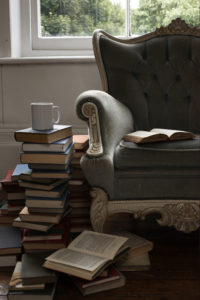 The majority of people connect most strongly with visual stimuli. As a self-publishing writer though, it is our job to make sure we cater to all our readers’ senses to fully immerse them in the world we are creating for them on the page. But how to best do that?
The majority of people connect most strongly with visual stimuli. As a self-publishing writer though, it is our job to make sure we cater to all our readers’ senses to fully immerse them in the world we are creating for them on the page. But how to best do that?
It’s All in the Details
During your pre-writing phase, consider your five main senses and then decide which ones will best help you set each scene. Try and think of at least one detail for each of the five senses—sight, sound, smell, touch, and taste—that will best place your reader in the story. Then write the scene, including as many specific details as possible. You may decide you don’t need all those details when you edit your work later on, but it’s always better to have too much than too little to start with.
Here are some of the ways you can use each sense to enhance your writing:
Sight
As we’ve already said, most people tend to be visual learners, so the majority of your story will be told using visual descriptions. We then use our other senses to add further details, fleshing out the environment. Think of your words as your readers’ eyes that allow them to look through the page and into the world you have created.
Here are a few sight words you might find helpful for creating the right atmosphere (but the list is near endless, of course):
• Craggy
• Billowy
• Crystalline
• Globular
• Obtuse
• Translucent
Remember, the use of color also creates atmosphere through emotional triggers and associations.
Sound
Sometimes we are deprived of visual cues. This is probably the scariest situation we can find ourselves in: alone in the dark. So what do you rely on? Your other senses, particularly any sound you can hear to help you piece together some sort of mental image about your surroundings. What am I hearing? Where is it coming from? How far away is it? Is there someone else in here with me? All the elements of a horror story are coming together.
Remember, you can always invent new words to create sounds on paper. Words like whizzing, hoot, and BOO! are called onomatopoeia.
Try to use action words to help convey the intensity or volume of the sound. Are the waves crashing against the rocks or gently lapping at the shore?
Archway Publishing is always looking for content for its blog. If you’re an Archway Publishing author and would like to share an idea for a guest blog post, please visit our Blog Guidelines page.

